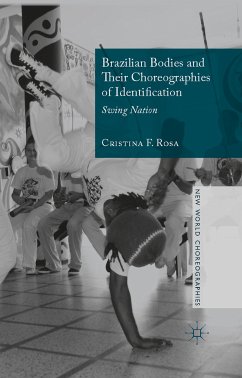
Brazilian Bodies and Their Choreographies of Identification (eBook, PDF)
Swing Nation
Versandkostenfrei!
Sofort per Download lieferbar
104,95 €
inkl. MwSt.
Weitere Ausgaben:

PAYBACK Punkte
52 °P sammeln!
Brazilian Bodies, and their Choreographies of Identification retraces the presence of a particular way of swaying the body that, in Brazil, is commonly known as ginga . Cristina Rosa its presence across distinct and specific realms: samba-de-roda (samba-in-a-circle) dances, capoeira angola games, and the repertoire of Grupo Corpo.
Dieser Download kann aus rechtlichen Gründen nur mit Rechnungsadresse in A, B, BG, CY, CZ, D, DK, EW, E, FIN, F, GR, HR, H, IRL, I, LT, L, LR, M, NL, PL, P, R, S, SLO, SK ausgeliefert werden.












